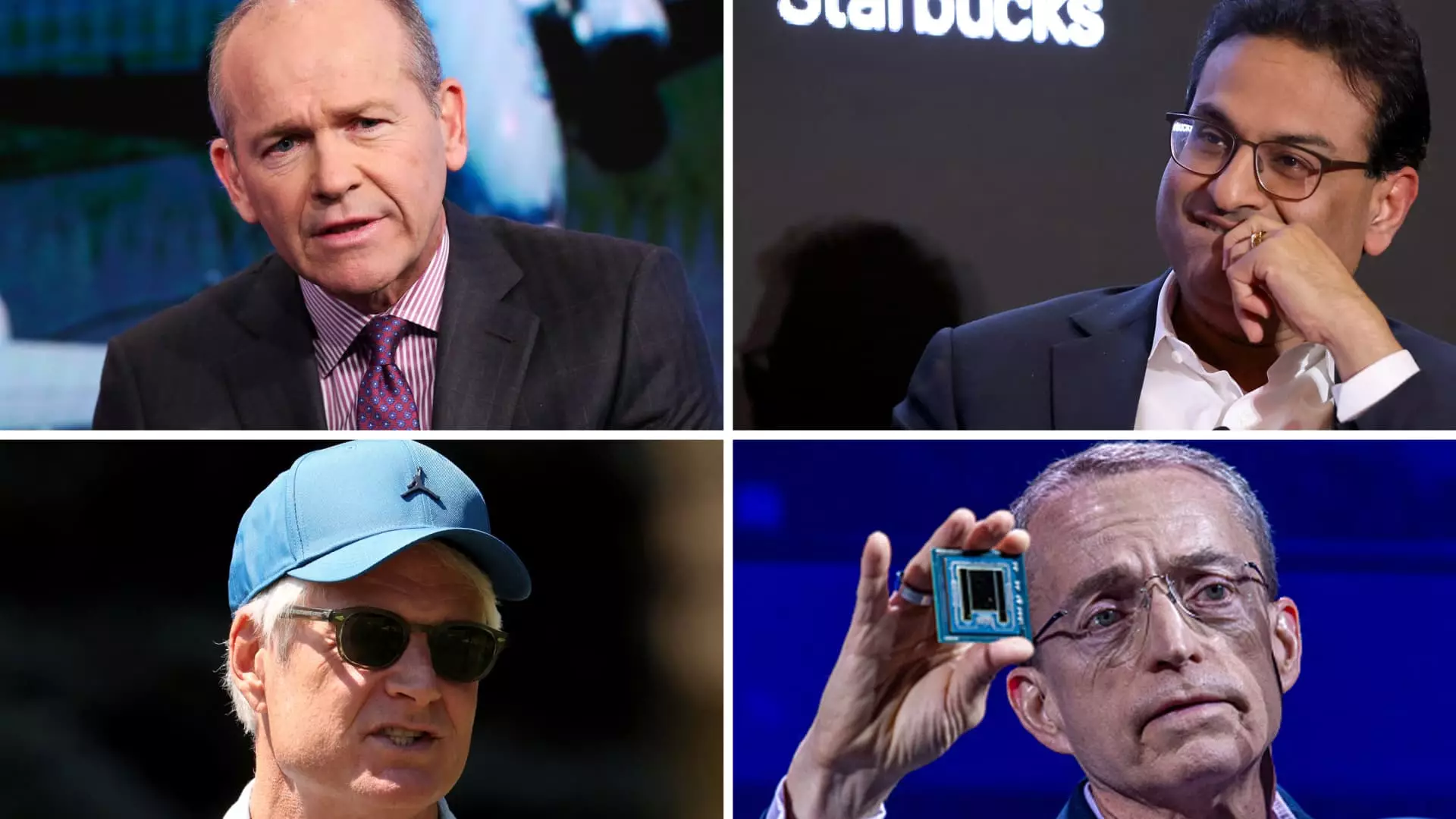The phenomenon of chief executive turnover is not new to the corporate landscape; however, 2023 marks a noteworthy spike in such transitions within U.S. public companies. According to Challenger, Gray & Christmas, a well-known outplacement firm, there have been 327 CEO changes recorded by November, representing an 8.6% increase compared to the previous year and surpassing the figures of any year since 2010. The uptick is particularly striking given the historical context, especially when considering that 2021 saw the lowest turnover rate over the past 14 years, with only 197 replacements.
Traditionally, CEO turnover has been influenced by corporate performance metrics, investor sentiment, and market conditions. The current climate reflects a stark shift: with a backdrop of resilient consumer spending, investors and boards have become increasingly intolerant of underperformance. This impatience reflects a broader trend where companies operating in a robust economy have been quick to act against leadership seen as failing to innovate or adapt.
Factors Driving Increased Turnover
The COVID-19 pandemic was a major turning point, inducing unprecedented challenges such as supply chain disruptions, labor shortages, and accelerated shifts in consumer preferences. Initially, these obstacles led to a temporary slowing of CEO turnover as companies scrambled to stabilize. However, the transitional period of the pandemic paved the way for a volatile corporate environment, where emerging economic pressures fused with changing consumer expectations have created a perfect storm for executive ousting.
Clarke Murphy, a leadership advisory firm director and former CEO himself, notes that higher borrowing costs and inflation have tightened the stakes for CEOs already operating under scrutiny. As investor scrutiny heightens during periods of strong market performance, notably in the case of significant S&P 500 growth, boards have reacted faster to signs of poor performance than they may have in previous years. This has resulted in an environment where consumer-driven sectors, more prone to rapid shifts in consumer sentiment, typically experience higher turnover rates than traditional industries like oil and gas.
Examining high-profile cases reveals the complexity and urgency characterizing current executive changes. For instance, Intel’s dismissal of CEO Pat Gelsinger underscores the challenges faced by legacy technology firms struggling to keep pace with newer competitors. Following underwhelming performance metrics, Intel’s strategic misalignment amidst the AI boom stands in stark contrast to the rising dominance of rival Nvidia.
Boeing, an aerospace giant reeling from its own safety crises involving the 737 Max, also exemplifies the swift managerial changes taking place. The ousting of Dave Calhoun in conjunction with a shake-up signifies an organization’s desperation to restore trust and stability amid ongoing operational turbulence.
Starbucks, too, made headlines by welcoming Chipotle’s Brian Niccol as its new chief executive amidst stagnant sales figures. This move epitomizes a growing trend of poaching talent from companies displaying resilience and effective growth strategies, further complicating the traditional notions of loyalty and leadership roles. Niccol’s immediate and ambitious revitalization plans for Starbucks aim to refocus on the brand’s essence while addressing recent lackluster performance.
Interestingly, the wide-ranging turnover isn’t limited to hospitality and technology; it has seeped into diverse sectors. Peloton, once a darling of the pandemic fitness movement, continues to face hurdles in its adaptation to a post-pandemic world. The revolving door of leadership, which has seen Barry McCarthy and recently appointed Peter Stern navigate the company’s tumultuous waters, reflects a broader struggle to recalibrate business strategies for a new era.
In retail, Kohl’s struggles, paralleled by the resignation of its CEO, mirrors the wider challenges facing off-mall shopping establishments. Under continuous pressure from plummeting comparable store sales, the new leadership must contend with reinvigorating customer interest while also managing operational costs.
Additionally, the transformation of the weight loss company formerly known as Weight Watchers highlights the unpredictable market dynamics affecting health and wellness firms. The resignation of CEO Sima Sistani amid dwindling shares underscores the necessity for organizations to adapt quickly to shifting consumer demands, particularly in the context of rising interest in pharmaceutical weight-loss solutions.
The wave of CEO turnover in 2023 underscores an increasingly impatient corporate environment where stakeholders demand rapid responses to evolving market conditions. The urgency of this demand may very well indicate a transformative period in corporate governance and leadership selection, compelling businesses to prioritize adaptive strategies and resilient leadership.
As the business landscape continues its evolution, organizations will need to recognize the implications of leadership changes not only on their immediate growth but also on long-term positioning. The companies that emerge strongest from this challenging period will likely be those capable of swift adaptation and innovation, balancing stakeholder expectations with effective management strategies. Ultimately, the narrative of 2023’s executive turnover serves as a powerful reminder of the corporate world’s volatility and the need for those at the helm to remain agile and responsive to a fast-changing marketplace.

